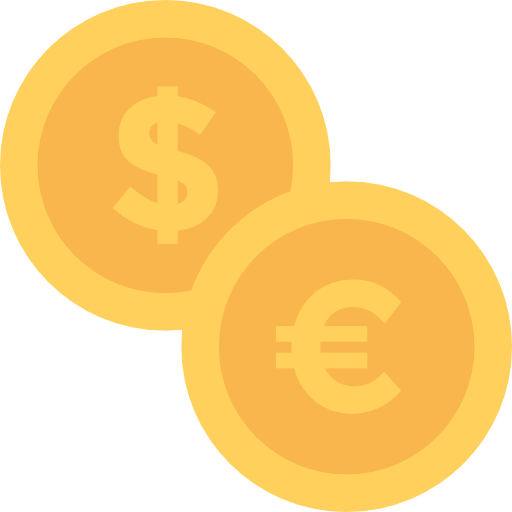Master the science behind every shot—learn how billiards geometry and physics can sharpen your precision and elevate your game.
Did you know that the best contact point on your cue ball isn't always at its center?
By adjusting this point slightly above or below the center, you can drastically affect the spin and subsequent path of the ball.
Mastering these subtle shifts in your strike can lead to more precise control over both the cue ball and your target.
As you explore further, you'll see how combining the right angles with the correct force can enhance your shot's effectiveness.
Stick around to uncover how these elements interplay to not only improve your accuracy but also elevate your overall strategy in the game.
Understanding Cue Ball Trajectories
Understanding cue ball trajectories is essential for mastering the physics behind your shots in billiards.
By grasping the geometry in pool shots, you'll harness the ability to control the game's outcome more effectively.
Each shot you take involves calculating angles and predicting the cue ball's path after contact with other balls and cushions.
Firstly, consider the angle of incidence—the angle at which you strike the cue ball.
This angle is vital because it determines the angle of reflection, or the path the cue ball will follow post-collision.
Remember, the angle of reflection equals the angle of incidence, a fundamental rule of geometric principles applied to billiards.
Next, factor in the contact point on the object ball.
Hitting the ball off-center produces different trajectories, enabling you to position the cue ball strategically for subsequent shots.
This requires precise calculation and visualization of the cue ball's path, integrating both linear and angular trajectories.
Furthermore, by understanding the geometric relationships between the balls and the table boundaries, you can manipulate the game to your advantage.
Strategic use of bank shots, where you utilize the cushions, can turn a defensive play into an offensive opportunity, asserting your dominance on the table.
The Physics of Spin and Speed
Now that you've grasped how angles and contact points affect the cue ball's path, let's explore how spin and speed influence your billiard shots.
Mastering these elements is essential for dominating the game, as they directly affect the cue ball's behavior post-impact.
Applying spin, or "English", to the cue ball involves striking it off-center.
This manipulation changes the ball's rotation, affecting its direction after hitting the rails and other balls.
Topspin propels the cue ball forward after contact, while backspin causes it to roll backward.
Side spin alters its horizontal movement, important for escaping tight clusters or positioning for subsequent shots.
Speed control is equally important.
The force of your stroke determines the initial speed of the cue ball, influencing how far it travels before and after colliding with the target ball.
Powerful shots aren't always the answer; finesse often trumps brute strength.
It's about delivering the right energy for the required action, whether it's a soft touch for a delicate position play or a forceful drive for a break.
These cue ball control techniques form the foundation of strategic play.
By integrating spin and speed effectively, you'll enhance your precision and maintain the upper hand in your games.
Calculating Angles for Bank Shots
Mastering bank shots in billiards requires precise calculations of angles and reflections.
To dominate your opponents and elevate your game, you must understand the mathematical precision behind each shot.
The fundamental rule is the law of reflection, which states that the angle of incidence (the angle at which the ball approaches the cushion) equals the angle of reflection (the angle at which it leaves).
To accurately determine these angles, visualize an imaginary line from your target pocket through the ball you want to bank.
This line extends to the cushion, creating a point of impact.
The angle formed between this line and the cushion is your angle of incidence.
Mirroring this angle on the other side of the impact point gives you the angle of reflection, guiding the ball towards your intended pocket.
When applying these principles, consider the cushion's firmness and the ball's velocity, which can slightly alter the angle of reflection.
Billiards shot strategies often include minor adjustments based on these factors, ensuring greater accuracy in your gameplay.
Applying Force and Contact Points
Often, the success of your shot in billiards hinges on how effectively you apply force and choose the right contact points on the cue ball.
Mastery in managing these aspects is fundamental to controlling the game's flow and dominating the pool table.
When you're calculating the ideal force to apply, consider both the distance to the target ball and the desired post-contact positioning.
Too much power can lead to loss of control, whereas insufficient force mightn't complete the shot or position the cue ball advantageously for your next move.
Precise pool shot calculations are essential; they require you to evaluate the weight of the shot against the resistance offered by the table's surface.
Choosing the right contact point on the cue ball also determines the spin and trajectory post-impact.
For a powerful straight shot, striking the center of the cue ball delivers a direct force.
If you need to manipulate the ball's path, adjusting the contact point above or below the center influences top or backspin, respectively.
Similarly, hitting the ball off-center to the left or right imparts side spin, which can be strategically used to avoid obstacles or position the cue ball effectively for subsequent shots.
Advanced Techniques in Position Play
In the domain of billiards, advancing your position play through sophisticated techniques can dramatically elevate your game.
Mastery of position play not only enhances your ability to control the table but also intimidates your opponents.
Here's how you can dominate the pool table:
Understand the Tangent Line
The first step in mastering position play is understanding the tangent line—the path the cue ball will naturally follow post-impact.
Grasping this concept is essential for predicting ball movement.
Apply Spin Effectively
Learning how to control spin—topspin, backspin, left, and right English—is important.
Spin affects the cue ball's trajectory after hitting the object ball, allowing for precise positioning for your next shot.
Develop a Keen Eye for Angles
How to aim in pool isn't just about hitting the ball; it's about foreseeing several moves ahead.
Sharpen your skills in visualizing angles and calculating deflections to set up your shots strategically.
Practice Cue Ball Control
The essence of position play lies in your ability to place the cue ball exactly where you need it.
This demands practice and a deep understanding of force application and rebound angles.
Frequently Asked Questions
What Is the Best Type of Cue Stick for Beginners?
You'll want to start with a cue stick that emphasizes control and forgiveness in handling errors.
Look for a cue with a medium weight (about 19 ounces) as it offers a good balance between power and control.
A cue with a leather tip and a well-constructed shaft guarantees better contact with the ball and reduced deflection.
Choosing a durable material like maple can also enhance your game as you develop your skills.
Can Different Cue Ball Materials Impact Game Play?
Yes, different cue ball materials can greatly impact your gameplay.
If you're using a phenolic resin ball, you'll notice it's harder and more resistant to wear compared to traditional polyester.
This difference affects the ball's energy transfer and friction on the tablecloth, altering shot precision and power.
Understanding these material characteristics allows you to manipulate your shots more effectively, giving you a strategic advantage in controlling the game's flow.
What Are Common Fouls to Avoid in Billiards?
In billiards, you must avoid common fouls to maintain control and dominance.
Don't pocket the cue ball; it hands power to your opponent. Avoid hitting balls out of sequence, which disrupts strategic play.
Make sure you don't commit a double hit; it's not only a fault but also reflects poor skill.
How Often Should a Pool Table Be Re-Felted?
You should refelt your pool table approximately every 3 to 5 years, depending on usage and the quality of the felt.
Heavy play can lead to faster wear, necessitating more frequent replacement to maintain ideal playing conditions. High-quality felt can extend this timeframe.
Regular maintenance, including brushing and covering the table, will also preserve the felt's condition, ensuring a smooth and fast surface that enhances your control and precision during play.
Conclusion
So, you think you've got the hang of billiards?
Remember, it's not just about whacking balls and hoping for the best.
By delving into the mysteries of angles, spin, and physics, you'll not only dazzle with your shots but also confuse your opponents with your savvy.
So, keep practicing those forceful impacts and calculating those tricky bank shots.
Master the art, and soon you'll be the geometry wizard of the billiards world.
Trust me, it's a game-changer!




